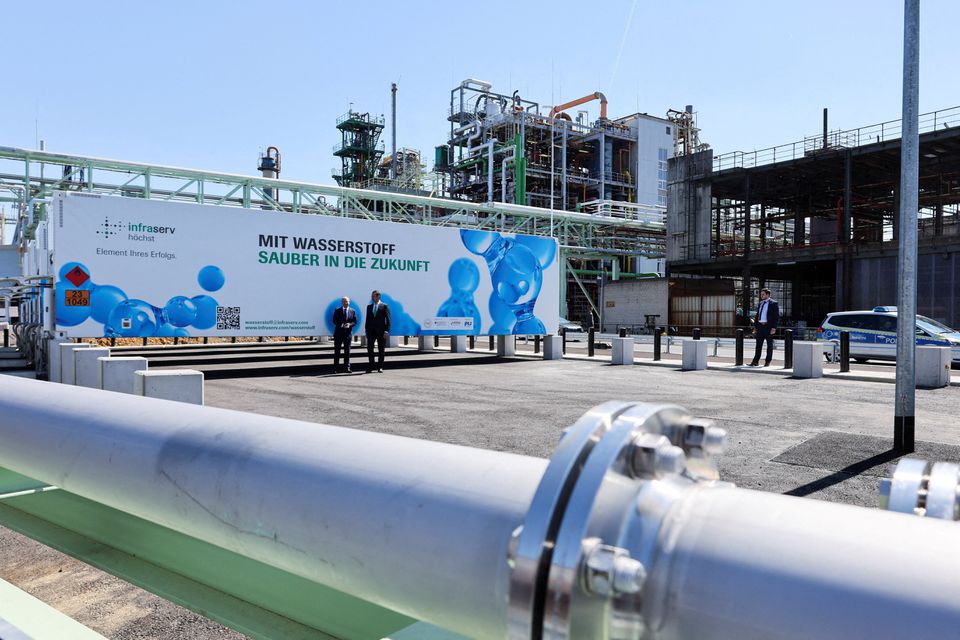Cyprus’ newly proposed national hydrogen strategy has been put forward for consultation, aiming to align the country with the European Union’s broader hydrogen goals.
However, according to energy professor Andreas Poullikkas, the plan lacks the necessary depth, clear targets, and concrete implementation measures needed for a robust national strategy.
The former chairman of the Cyprus Energy Regulatory Authority (CERA) noted that the EU has established a comprehensive hydrogen strategy, setting specific goals for renewable hydrogen production and usage by 2030 and 2050.
Poullikkas noted that Cyprus’ draft strategy attempts to align with these objectives but remains far more limited in scope and detail compared to similar plans adopted by other EU member states.
“The document presents a vision for hydrogen use in Cyprus, focusing on energy transition, climate neutrality, and reducing reliance on fossil fuels,” he said.
However, he explained that while it outlines actions for infrastructure development, hydrogen use in transport, and regulatory framework creation, the proposals remain general and lack detailed implementation or funding plans.
The draft strategy includes two development scenarios for hydrogen in Cyprus up to 2030 and 2050, one conservative and one ambitious.
However, it does not provide explanations or a clear roadmap on how these scenarios would be achieved.
“There are no quantified targets or commitments, such as the installed capacity of electrolysis units for 2030 or 2040, or the expected production levels of green hydrogen,” Poullikkas said.
He highlighted that other EU countries have set firm targets, with Spain and Germany aiming for 12 and 10 gigawatts of electrolysis capacity, respectively, while France, Denmark, Portugal, and Sweden have also committed to significant capacity increases.
“The document under consultation is more of a preliminary study rather than a fully fleshed-out hydrogen strategy,” he argued.
Nevertheless, he acknowledged that it lays the groundwork for a future hydrogen policy, as it proposes two short-term actions for 2025-2030.
These include the establishment of a regulatory framework for hydrogen production, distribution, and use by 2027, and awareness campaigns, online platform utilisation, and enhanced collaboration between universities and potential hydrogen users.
“This is a preliminary action plan rather than a fully developed national strategy,” he said.
He also stressed that it “requires further development, specialisation in policies, financial mechanisms, and implementation frameworks to match the more advanced strategies of other countries”.
Poullikkas stated that Cyprus is still in the early stages of hydrogen development compared to other nations.
“Hydrogen must first be recognised as a core component of the country’s energy mix for 2030 and beyond,” he said.
Moreover, he argued that targeted measures must be formulated to kickstart the hydrogen value chain—including production, transport, storage, and end-use—and to create a hydrogen market in Cyprus.
“For this to become a real strategy, it must include specific and quantifiable targets, such as hydrogen production volumes and carbon emission reduction goals,” he explained.
Furthermore, he pointed out that a “genuine strategy would require detailed implementation plans, timelines, financing schemes, investment incentives, and coordination with other countries and international organisations”.
He also underlined the need for Cyprus to leverage regional advantages for renewable hydrogen production and long-term synergies in transportation and end-use, such as collaborations within the India-Middle East-Europe Economic Corridor (IMEC).
“A comprehensive hydrogen strategy must be dynamic, adaptive, and data-driven, aiming to achieve the country’s climate and energy goals,” Poullikkas said.
In addition, he mentioned that “Cyprus has strong solar potential and a strategic geographic position, which could allow it to develop a competitive hydrogen market—provided it adopts a well-designed, integrated strategy”.
In this context, he suggested that a fully developed strategy should encompass all aspects of hydrogen development, from production and storage to usage and infrastructure, while also defining clear targets and deadlines.
“The strategy must be tailored to Cyprus’ specific characteristics, including its geography, energy mix, and economic capacity, while aligning with global and European climate neutrality goals,” he said.
Looking ahead, he suggested that short-term actions between 2025 and 2030 could focus on pilot hydrogen projects, the establishment of basic infrastructure such as refuelling stations and production units, legislative frameworks, and investment incentives.
“The most efficient uses of hydrogen should be prioritised first, such as heavy vehicles and industrial applications,” he stated.
For the medium term (2030-2040), he proposed expanding hydrogen production and usage, developing transport and storage infrastructure, and integrating hydrogen into additional sectors, such as shipping.
By 2040-2050, he suggested the complete integration of hydrogen into the national energy economy, achieving climate neutrality with hydrogen’s support, and fostering international cooperation for green hydrogen exports.
“A proper hydrogen strategy must be comprehensive, proactive, and based on clear, actionable steps,” Poullikkas said.
“Cyprus has an opportunity to position itself as a key player in the hydrogen economy, but it must move beyond broad statements and into concrete policies and investments,” he concluded.







Click here to change your cookie preferences